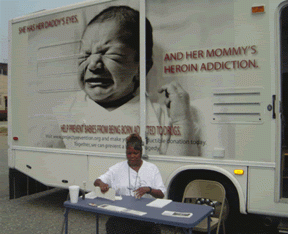Overcoming addiction is hard. There are the cravings, the feelings of shame, the intense impulses, uncontained emotions, the questioning, and the everlasting feelings of self-doubt. And then, there is the stigma.
From 1999 to 2017, more than 399,000 people died from drug overdoses that involved prescription and illicit opioids, and yet, a stigma around opioid use remains.
In a review tracing the treatment of opioid use disorder in the United States dating back to the 1930s, with particular focus beginning with the widespread prescribed use of opioids to address symptoms of chronic pain in the 1990s, Dennis McCarty, Ph.D., a professor of public health in the OHSU-Portland State University School of Public Health; Kelsey Priest, M.P.H., an M.D./Ph.D. student in the OHSU School of Medicine and OHSU-PSU School of Public Health; and Todd Korthuis, M.D., M.P.H.; an associate professor of medicine (general internal medicine and geriatrics) in the OHSU School of Medicine, found that, “Opioid prevention and treatment efforts in the United States remain constrained and consequently stigmatized by a legacy of federal restrictions, an unwillingness to acknowledge idiopathic addiction, and a lack of science-based interventions for chronic pain” (McCarthy et al., 2017).
McCarthy and his team call for a system overhaul – one that embraces evidence-based therapies integrated into primary and specialty care. In short, one that acknowledges opioid addiction as a very real and pressing problem.
“The lessons learned in the first two decades of the new century have been hard learned and painful,” explains Mccarthy (McCarthy et al., 2017).
Lessons that many feel we cannot afford to repeat. Opioid addiction, whether we like it or not, is here. Our job is to try to understand it, to find helpful ways to treat it, to provide the resources those battling it need.
What we must overcome are our biases, our assumptions, and our fears about it. In the words of Martin Luther King Jr., “Darkness cannot drive out darkness: Only light can do that. Hate cannot drive out hate: Only love can do that.”
Related Online Continuing Education (CE) Courses:
Overcoming the Stigma of Mental Illness is a 2-hour online continuing education (CE/CEU) course that explores the stigmas around mental illness and provides effective strategies to overcome them. Course #21-24 | 2018 | 35 pages | 15 posttest questions
Nutrition and Addiction: Advanced Clinical Concepts is a 2-hour online continuing education (CE) course that examines addiction from a nutritional perspective. Drug addiction is an alarming problem in America, and one that is not receiving the treatment it needs. Compounding the problem is that addiction often leads to nutritional deficiencies, which predisposes the addict to a host of related health complications. Treatment recovery programs that also offer nutritional education have been found to significantly improve three-month sobriety success rates. Course #21-14 | 2017 | 30 pages | 15 posttest questions
Professional Development Resources is approved by the American Psychological Association (APA) to sponsor continuing education for psychologists. Professional Development Resources maintains responsibility for this program and its content. Professional Development Resources is also approved by the National Board of Certified Counselors (NBCC ACEP #5590); the Association of Social Work Boards (ASWB Provider #1046, ACE Program); the American Occupational Therapy Association (AOTA Provider #3159); the Commission on Dietetic Registration (CDR Provider #PR001); the Alabama State Board of Occupational Therapy; the Florida Boards of Social Work, Mental Health Counseling and Marriage and Family Therapy (#BAP346), Psychology & School Psychology (#50-1635), Dietetics & Nutrition (#50-1635), and Occupational Therapy Practice (#34); the Georgia State Board of Occupational Therapy; the New York State Education Department’s State Board for Mental Health Practitioners as an approved provider of continuing education for licensed mental health counselors (#MHC-0135); the Ohio Counselor, Social Worker & MFT Board (#RCST100501); the South Carolina Board of Professional Counselors & MFTs (#193); the Texas Board of Examiners of Marriage & Family Therapists (#114) and State Board of Social Worker Examiners (#5678); and is CE Broker compliant (all courses are reported within a few days of completion).
Enjoy 20% off all online continuing education (CE/CEU) courses @pdresources.org! Click here for details.

























